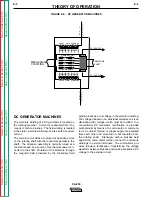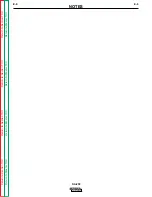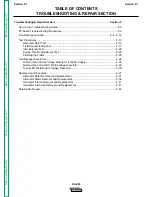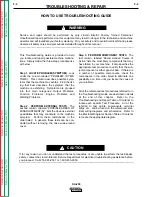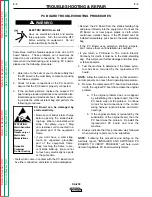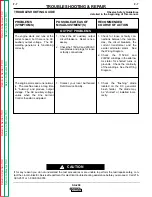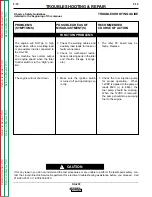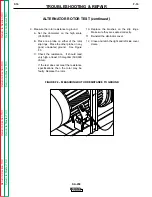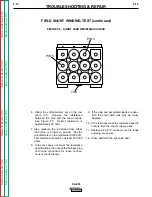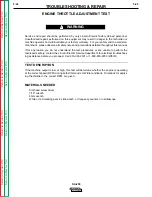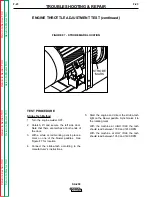
Retur
n to Section TOC
Retur
n to Section TOC
Retur
n to Section TOC
Retur
n to Section TOC
Retur
n to Master TOC
Retur
n to Master TOC
Retur
n to Master TOC
Retur
n to Master TOC
TROUBLESHOOTING & REPAIR
F-9
F-9
SA-250
TROUBLESHOOTING GUIDE
Observe Safety Guidelines
detailed in the beginning of this manual.
CAUTION
If for any reason you do not understand the test procedures or are unable to perform the test/repairs safely, con-
tact the Lincoln Electric Service Department for electrical troubleshooting assistance before you proceed. Call
216-383-2531 or 1-800-833-9353.
PROBLEMS
(SYMPTOMS)
POSSIBLE AREAS OF
MISADJUSTMENT(S)
RECOMMENDED
COURSE OF ACTION
FUNCTION PROBLEMS
The engine will NOT go to high
speed when a load is applied to the
welding output terminals. The
engine does go to high speed when
a load is applied to the AC auxiliary
power receptacles.
1. Check welding cables for loose
or faulty connections.
1. Check the reed switch (CR2) for
proper operation. The reed
switch should close when there
is current flow in the welding cir-
cuit.
2. Locate the red lead connected
to the idler PC board. While
leaving the red lead connected,
jumper the red lead to frame
ground. If the engine goes to
high speed, the fault is in the
reed switch or associated leads.
3. If the engine does NOT go to
high speed (in step 2), the idler
PC board may be faulty.
The engine will NOT go to high
speed when a load is applied to the
AC auxiliary receptacles. The
engine does go to high speed when
a load is applied to the welding out-
put terminals.
1. Check the auxiliary power plug
and associated leads for loose
or faulty connections.
2. The load may be too small. The
load must be above 150 watts.
1. Check the leads associated with
the current transformer for loose
or faulty connections. See the
Wiring Diagram.
2. Check the current transformer
for “opens” in the windings.
3. The idler PC board may be
faulty. Replace.





